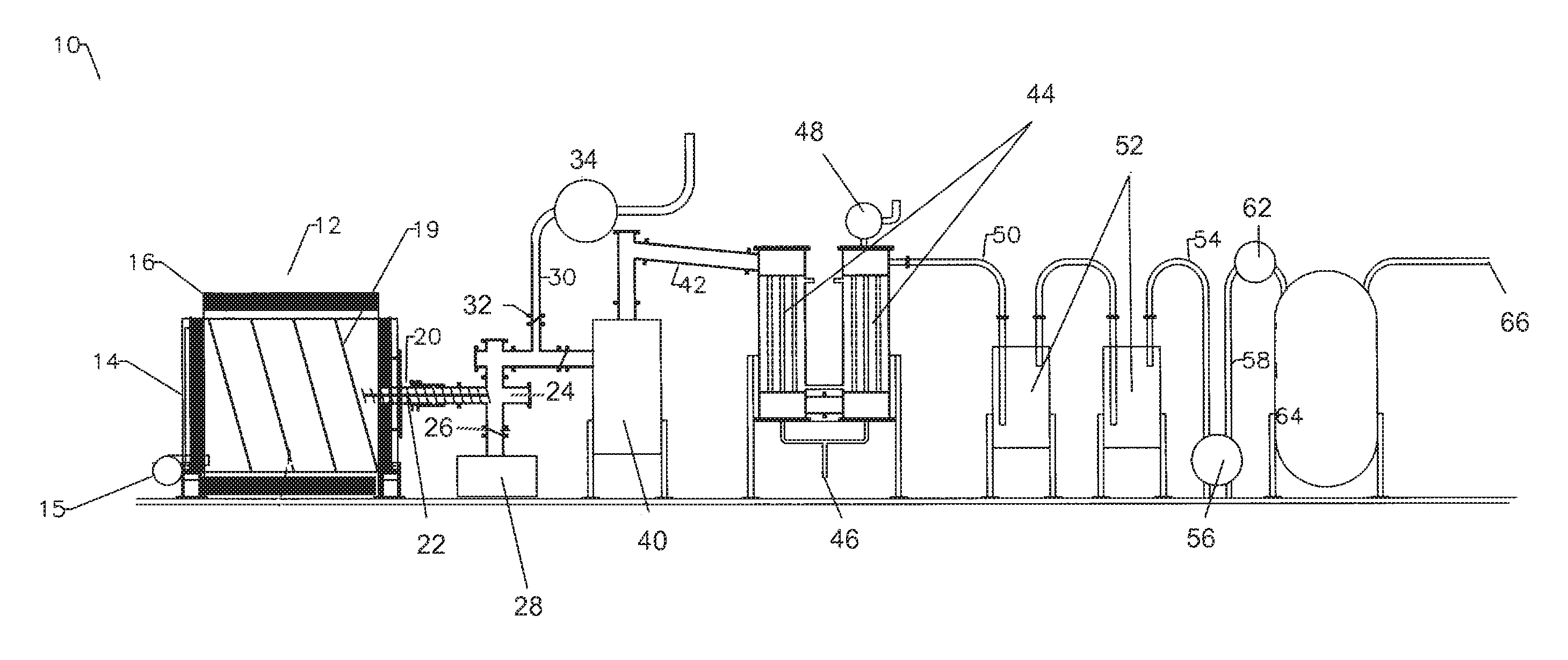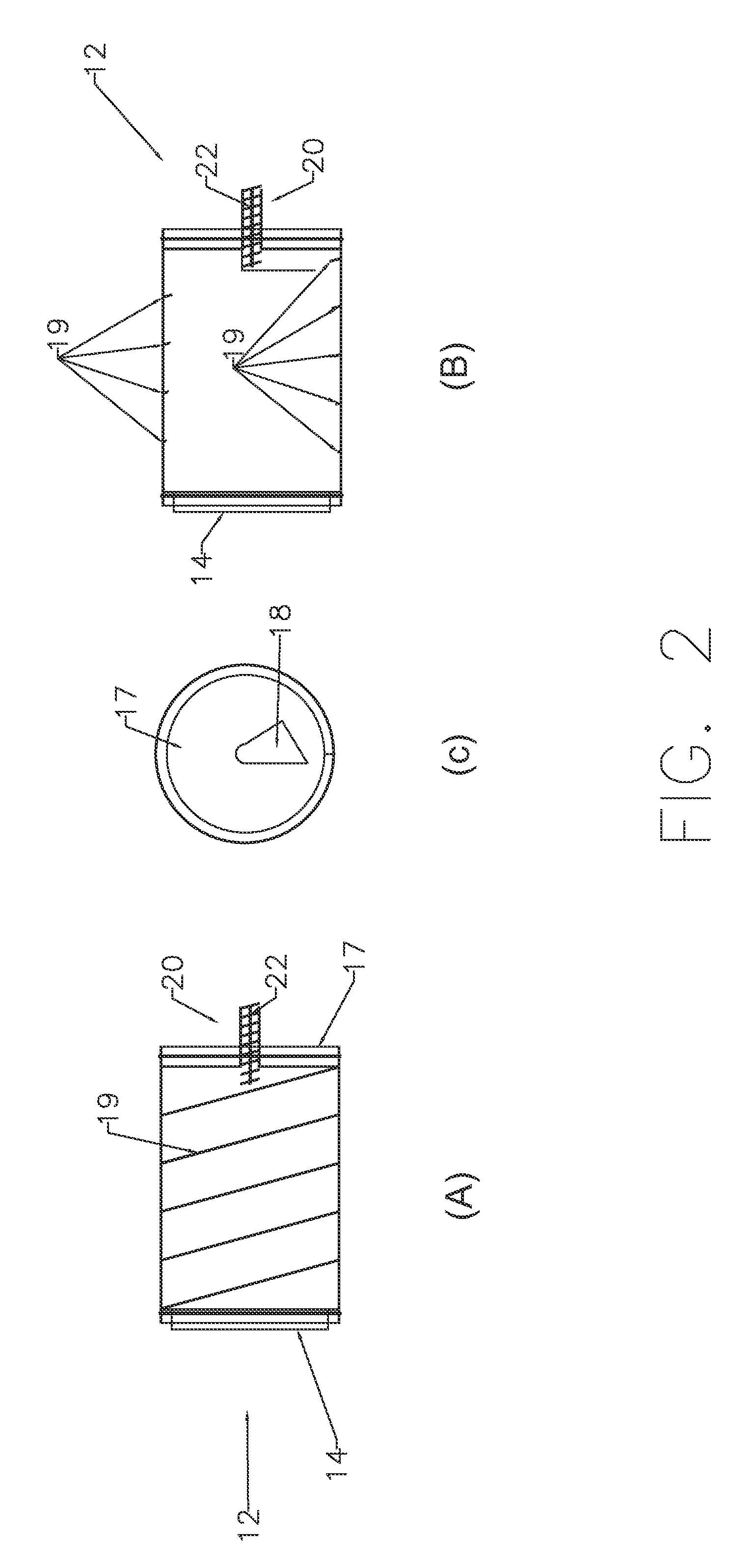Hybrid system and process for converting whole tires and other solid carbon materials into reclaimable and reusable components
a technology of whole tires and solid carbon based materials, which is applied in the direction of chemical/physical/physical-chemical processes, organic chemistry, products, etc., can solve the problems of incineration tires, metal in tires tends to clog feed systems, and the method of disposal does not reclaim for reuse any of the various components of tires. , to achieve the effect of saving all the energy needed
- Summary
- Abstract
- Description
- Claims
- Application Information
AI Technical Summary
Benefits of technology
Problems solved by technology
Method used
Image
Examples
Embodiment Construction
[0024]Referring more specifically to the drawings in which like reference numerals refer to like elements throughout the several views, exemplary non-limiting embodiments of the system and method of converting material, in particular tires and other solid carbon based material, of the present disclosure is illustrated in FIGS. 1-3. Referring to FIG. 1, one embodiment of a system for carrying out the method of the present disclosure is illustrated.
[0025]FIG. 1 illustrates an exemplary embodiment of a system and method of converting material, in particular, tires and other solid carbon based material. The system 10 includes a gasifier chamber 12, typically insulated, for converting material, in particular, tires and other solid carbon based material. In one embodiment the gasifier chamber 12 is a rotary chamber having opposed end panels, one end panel having a feed inlet 14, such as a door, allowing for the introduction of the material into the chamber 12. The chamber 12 includes one ...
PUM
| Property | Measurement | Unit |
|---|---|---|
| Temperature | aaaaa | aaaaa |
| Temperature | aaaaa | aaaaa |
| Fraction | aaaaa | aaaaa |
Abstract
Description
Claims
Application Information
 Login to View More
Login to View More - R&D
- Intellectual Property
- Life Sciences
- Materials
- Tech Scout
- Unparalleled Data Quality
- Higher Quality Content
- 60% Fewer Hallucinations
Browse by: Latest US Patents, China's latest patents, Technical Efficacy Thesaurus, Application Domain, Technology Topic, Popular Technical Reports.
© 2025 PatSnap. All rights reserved.Legal|Privacy policy|Modern Slavery Act Transparency Statement|Sitemap|About US| Contact US: help@patsnap.com



